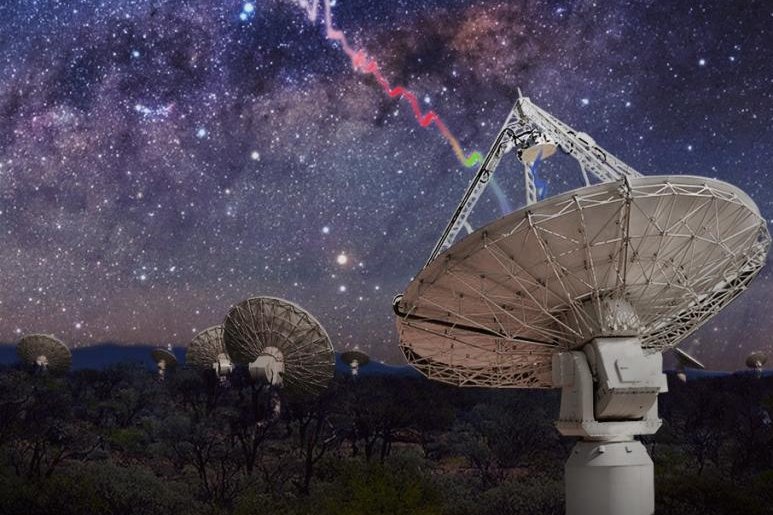An artistic rendering of CSIRO’s ASKAP radio telescope in western Australia detecting a fast radio burst. Photo courtesy OzGrav/Swinburne University of Technology
Oct. 29 (UPI) -- Scientists are learning more about bright flashes of energy coming from deep space after two radio telescopes in Australia were simultaneously positioned to observe the same area of of the sky.
The Curtin University-led Murchison Widefield Array and CSIRO's Australian SKA Pathfinder telescopes, which are located side-by-side in the desert of Western Australia's remote Murchison region, together searched for these radio bursts. The findings were published this month in Astrophysical Journal Letters.
These bright events lasted only a millisecond and astronomers initially dismissed the first recorded fast radio burst as an observational error.
The energy is equivalent to the amount released by the Sun in 80 years.
A fast radio burst travels to Earth over billions of years and sometimes passes through clouds of gas in its path. The different wavelengths that make up a burst are slowed each time a cloud of gas is encountered. By finding out how much material the burst has traveled through on its way to Earth, astronomers can detect "missing" matter located in the space between galaxies by timing the arrival of wavelengths at a radio telescope.
Since the first burst was discovered in 2007, scientists have sought to learn more about them.
"It's really thrilling to have a clue about the origins of these incredible bursts of energy from outside our galaxy," ICRAR-Curtin astronomer Dr Jean-Pierre Macquart, an astronomer at ICRAR-Curtin, said in a press release. "The MWA adds an important piece of the puzzle and it was only made possible with this 'technological tango' between the two telescopes."
"It's an exciting development because it unites the two teams and it brings home the advantage of having the two telescopes at the same site."
Though they were pointed at the same area of sky at the same time, only one detected the bursts.
ASKAP detected several extremely bright fast radio bursts, but the MWA, which scans the sky at lower frequencies, did not see anything.
"Fast radio bursts are unpredictable, so to catch them when both telescopes are looking in the same direction isn't easy," said study co-authorDr Ramesh Bhat, who is also based at ICRAR-Curtin. "It took many months of ASKAP and the MWA co-tracking the same area of sky, ensuring the best overlap of their views possible, to give us the chance at catching some of these enigmatic bursts.
He added it was a challenge to make "it all happen automatically, but it really paid off."
The scientists hope for additional teamwork.
"Future coordination between the teams will also benefit other areas of astronomy, as complementary views from the two telescopes can provide a more complete picture of a situation," Macquart said.
The facility's development, construction, commissioning and operations have been financed by investments from Australia, United States, India, New Zealand, Canada, Japan and China.















